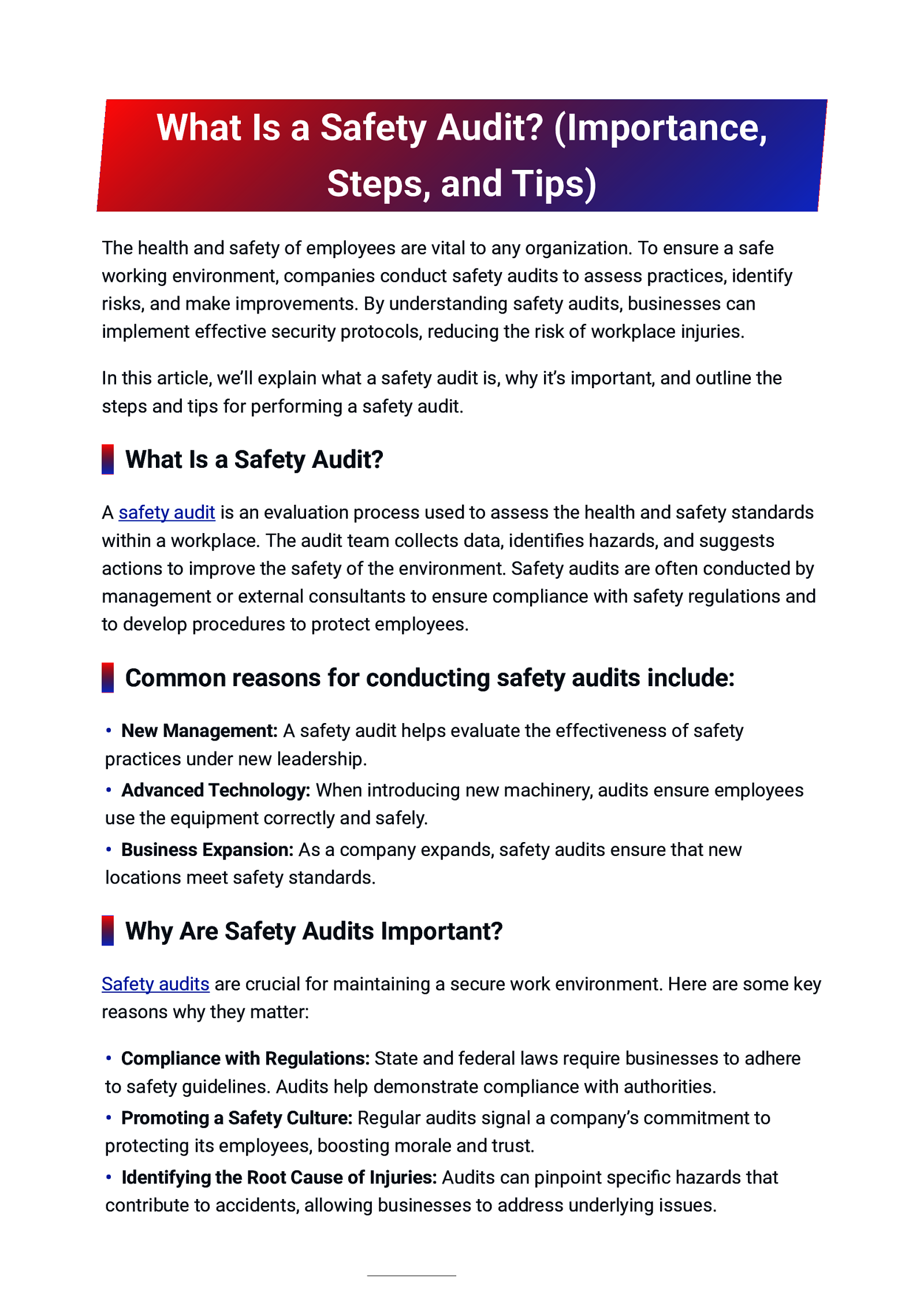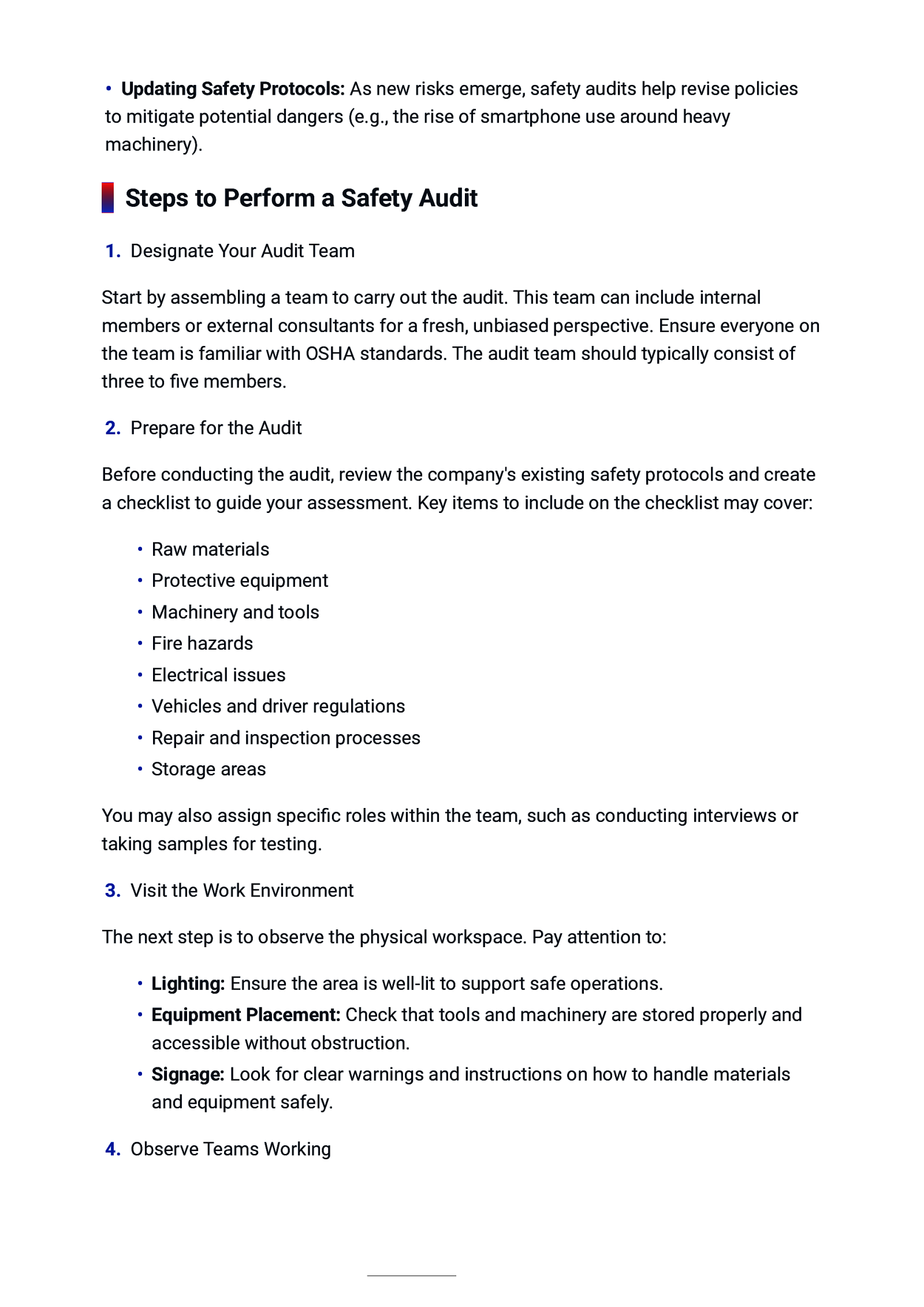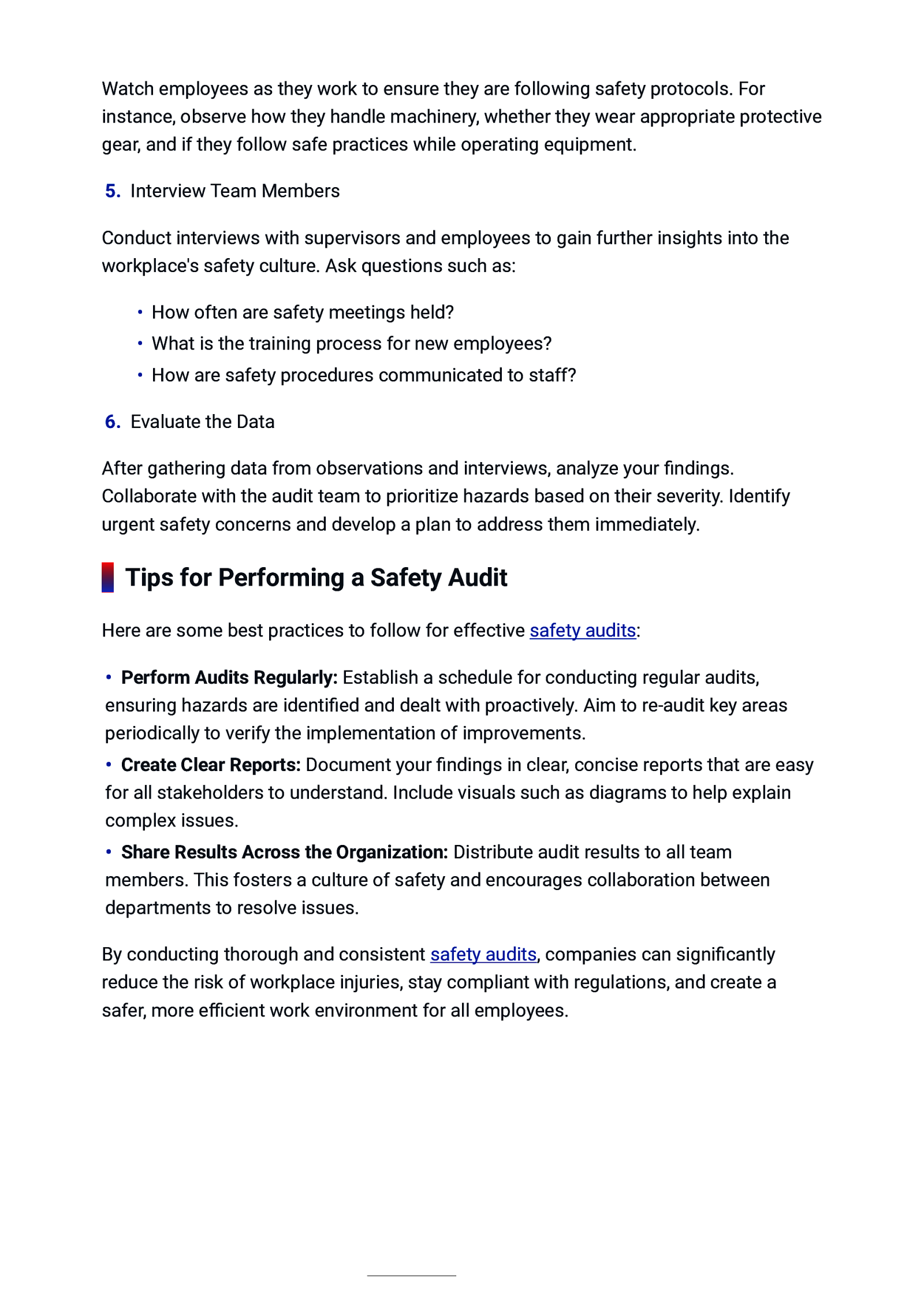What Is a Safety Audit? (Importance, Steps, and Tips) The health and safety of employees are vital to any organization. To ensure a safe working environment, companies conduct safety audits to assess practices, identify risks, and make improvements. By understanding safety audits, businesses can implement effective security protocols, reducing the risk of workplace injuries. In this article, we’ll explain what a safety audit is, why it’s important, and outline the steps and tips for performing a safety audit. What Is a Safety Audit? A safety audit is an evaluation process used to assess the health and safety standards within a workplace. The audit team collects data, identifies hazards, and suggests actions to improve the safety of the environment. Safety audits are often conducted by management or external consultants to ensure compliance with safety regulations and to develop procedures to protect employees. Common reasons for conducting safety audits include: • New Management: A safety audit helps evaluate the effectiveness of safety practices under new leadership. • Advanced Technology: When introducing new machinery, audits ensure employees use the equipment correctly and safely. • Business Expansion: As a company expands, safety audits ensure that new locations meet safety standards. Why Are Safety Audits Important? Safety audits are crucial for maintaining a secure work environment. Here are some key reasons why they matter: • Compliance with Regulations: State and federal laws require businesses to adhere to safety guidelines. Audits help demonstrate compliance with authorities. • Promoting a Safety Culture: Regular audits signal a company’s commitment to protecting its employees, boosting morale and trust. • Identifying the Root Cause of Injuries: Audits can pinpoint specific hazards that contribute to accidents, allowing businesses to address underlying issues.


